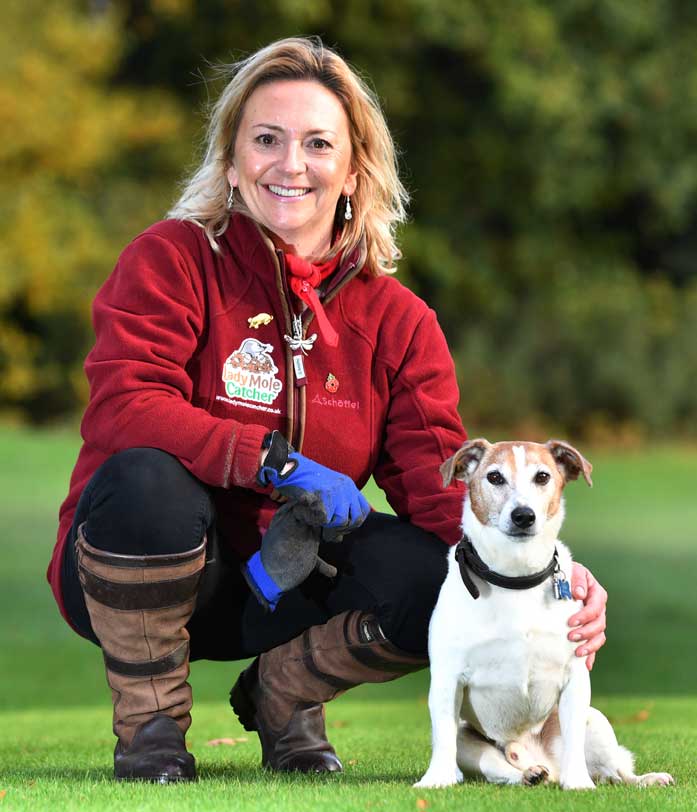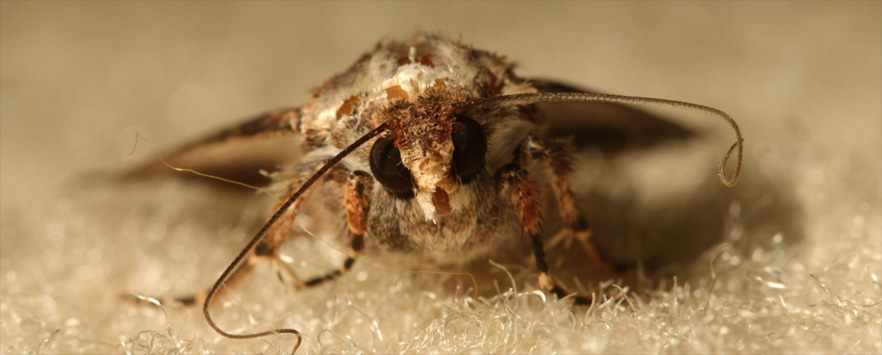Carpet Moths control
Lady Mole Catcher is also qualified to deal with carpet moths. As a professional wildlife management specialist, she has the knowledge and skills to deal with infestations as well as having access to specific insecticides which are not available to the general public.
What are carpet moths?
The carpet moth (Trichophaga tapetzella) is a similar size to the clothes moth but is smaller than a common house moth, at around 5mm long with a wingspan of about 14-18mm. They tend to be light orange-brown in colour, with three distinct dots on their forewings. The carpet moth rarely flies and is often seen flitting around at floor level. Although the adult carpet moth only leads a short life, females are capable of laying up to 200 eggs, preferably in dark, undisturbed areas. Once hatched, the larvae are often found under sofas, beneath curtains and heavy furniture and are able to live for up to two years. During this time, they will happily eat away at any natural fibres, damaging your soft furnishings and leaving bald patches in carpets. They are in fact attracted to the keratin found in many natural fibres and fabrics, such as wool.
How do you know if you have carpet moths on your property?
As so many of us now live in centrally heated homes with improved insulation, the reproduction and development cycle of the carpet moth can progress much faster – an egg can develop into an adult moth within as little as 2 months in a warm environment. If you notice bare patches on rugs and carpets, especially in rooms or areas which are rarely used, this could be a sign of a carpet moth infestation. You may also see larval cases deposited around the edges of a room or some adult moths hopping around at floor level.
Why control Carpet Moths?
There are a few issues to consider if you discover an infestation:
- Not only is carpet moth damage expensive to rectify in carpets and furnishings but if left untreated, an infestation can spread to attics, wardrobes and other storage areas
- Clothing such as wool, cashmere, silk, cotton, fur and leather are all at risk from being devoured by carpet moths
- Although regular vacuuming can help to remove carpet moth eggs before they hatch, the larvae are much more difficult to eradicate
- If you run a textiles or furnishings business, carpet moths can cause a lot of damage to stock or equipment
- Carpet moths in a museum could prove disastrous for historical artefacts such as tapestries or clothing (especially if they’re irreplaceable!)

Louise Chapman BA (Hons) PGCE
Norfolk’s very own Lady Mole Catcher®
Who I work with
- Householders in their gardens
- Farmers and Land Agents
- Outdoor Leisure Facilities
- Businesses
- Restaurants and Pubs
- Schools/Colleges
- Local Authorities
If Carpet Moths are causing problems for you, get in touch with Louise to arrange for a site survey or consultation. Call 01603 25 99 45 or 07876 14 11 53 or email louise@ladymolecatcher.co.uk

